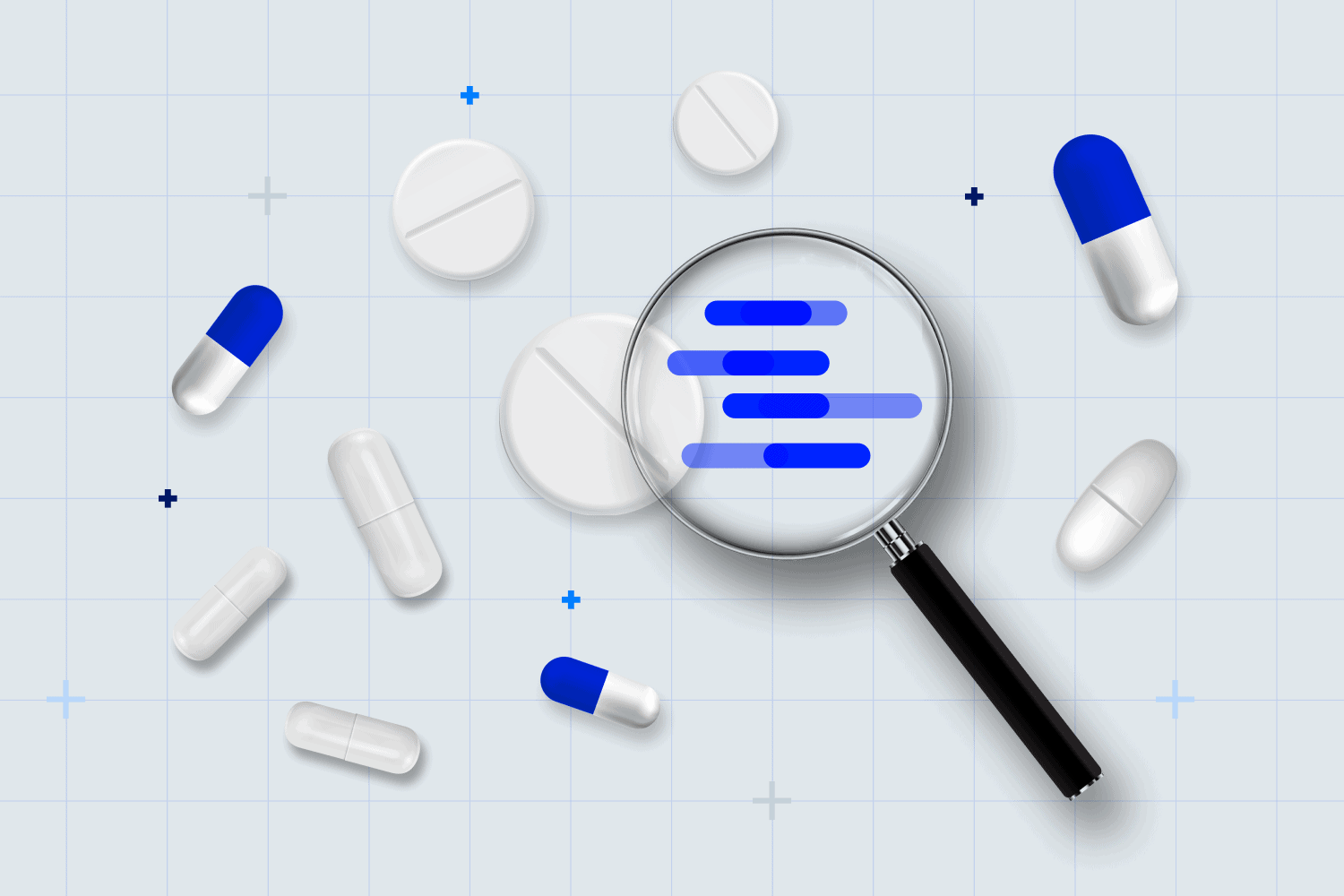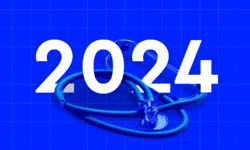The medical technology, or medtech, industry incorporates various technologies—both physical and digital—that are designed to improve patient care, increase efficiency in the healthcare system, and create more equity.
Medical devices are the physical subset of those technologies, which encapsulate any instrument, apparatus, machine, tool, implant, or similar product that is used to treat, prevent, diagnose, mitigate, or cure disease and other health conditions.
Though medical devices are not new to the medtech market, their most recent boom can be attributed to the 2020 global pandemic. Like most other industries, this space was adversely affected by COVID-19 due to supply chain issues and reduced budgets for product innovation that brought production to a halt. But unlike other sectors, the pandemic proved to be a catalyst for accelerated growth in this space—a trend expected to continue into the foreseeable future.
More than anything, the pandemic highlighted the capabilities of this industry to generate better patient outcomes and improve healthcare processes. With rampant possibilities in almost every healthcare sector, the medical device industry is well-positioned for continual growth and is in high demand for investors.
The overall forecast for the medical device market is overwhelmingly positive, with an expected global revenue of $595 billion in 2024 and a CAGR of 6.1% from 2022 to 2030. The healthcare sectors expected to be most affected by growth in the medical device space in the near future include:
- Cardiovascular
- Orthopedic
- Neurovascular
- Urological
- Diabetes
Within the AlphaSense platform, eight key trends have emerged to define the current and future medical device landscape. Below, we cover these medical device trends and outlook for 2024 and beyond.
Related Reading: Medtech Trends and Outlook for 2024
2024 Medical Device Trends at a Glance
- Continued rise in digital therapeutics and at-home diagnostics
- Growing use of biometric devices and wearable technology
- The potential impact of weight loss drugs
- Marketplace challenges within the European Union
- Increased speed to market for medical devices
- Greater emphasis on inclusivity and access
- Greater focus on sustainability and environmental, social, and governance (ESG)
- Generative AI opportunities in manufacturing and distribution
Top 8 Medical Device Trends
Rise in Digital Therapeutics and At-Home Diagnostics
Digital therapeutics are software-based medical devices that became hugely popular during the pandemic. These devices are often AI-based and used by clinicians to virtually treat, manage, and prevent a wide array of diseases and disorders.
These devices improve the efficiency and accessibility of care by enabling patients to manage their own health, without compromising the quality or standards of the care received. In a survey of medtech leaders, 63% of respondents agreed that digital therapeutics will have a major impact on the industry over the next 10 years. The U.S. market for digital therapeutics is estimated to have a compound annual growth rate of 29.8% between 2020 and 2025, according to Frost & Sullivan.
At-home diagnostics are closely related to digital therapeutics, in that they also empower patients to take their health into their own hands. Though they fall into the medical device category, these devices are not necessarily AI-based and are designed specifically to diagnose potential conditions or diseases. During the pandemic, COVID-19 tests were widely distributed throughout the globe to people’s homes, and people grew accustomed to self-testing. This caused the in-vitro (IVD) diagnostic market to undergo a massive growth spurt, though as we have moved farther from the pandemic, this market has slowed down considerably.
Still, this boom has demonstrated an area of opportunity for at-home diagnostics beyond COVID testing, and we will likely see increased proliferation and adoption of these self-tests to assess a variety of health conditions. This, in turn, will further open up consumer markets to medical device sales and potentially improve healthcare access for patients.
Read more about the future of digital health in this report.
Growing Use of Biometric Devices and Wearables
Wearable and biometric technology has been steadily growing in popularity for decades now, and the market has only accelerated its growth trajectory in the last few years. The global market for wearable technology is expected to reach $161 billion by 2033, a CAGR of 6% compared to 2023.
From mainstream wearable tech, like Fitbits and Apple Watches, to the more niche electrocardiogram (ECG) sensors, photoplethysmogram (PPG) sensors, and hydration and sweat sensors, these devices have the unique capacity to empower consumers and patients to manage their own health.
While the rise in popular interest and demand for these products means medical device companies can now find success in selling directly to the consumer market, it also means they will need to compete with large technology companies that want to enter the healthcare space.
The healthcare areas that are currently leading the adoption of wearable tech are: audiology, health science, kinesiology, nursing, occupational therapy, pharmacy, and physical therapy. While new devices are emerging at a rapid clip, the market is far from saturated. Opportunities abound for innovative medical device companies that can create a wearable or biometric device that provides value to consumers while also easing pressure on hospitals and healthcare facilities.
The wearable device industry is even seeing enhanced innovation with the surge in generative artificial intelligence (genAI) and other AI-powered technologies. We discuss this trend in greater detail in our genAI section below. Beyond AI, the recent uptick in alternative data investment, like real-world data, is providing healthcare companies with more information on human biometrics, accelerating growth further in the wearable space.
The Impact of Weight Loss Drugs
In 2023, weight loss medications such as Ozempic and Wygovy experienced an unprecedented surge in demand, leaving many to wonder what the negative repercussions could be on medical device companies. Indeed, medical device stocks plummeted several months ago as investors assessed the potential impacts of these drugs on the medical device sector.
And while it’s true that medical devices such as those used in bariatric surgery would be directly affected if weight loss drugs eliminate the need for those procedures, analysts and medical device company leaders are largely unconcerned.
Firstly, issues such as high cost, limited accessibility, and adverse side effects are all headwinds for total saturation of weight loss drugs in the market. Secondly, data shows that patients taking weight loss drugs are unlikely to take them for longer than a year, which means they would still presumably need medical device treatments in the future.
European Marketplace Challenges
Historically, it has been challenging for medical device companies to get their products into European markets, mostly due to strict medical device regulations (MDRs) in the EU and the United Kingdom (UK). Both the EU and UK were supposed to come out with updated MDRs in 2024. However, the EU is now looking to delay the compliance deadline for its renewed MDR by several years, as there are insufficient resources to meet the deadline required by law, and the EU would face potentially critical medical supply shortages if they stick to the current deadline.
With all of these regulatory changes to keep track of, medical device companies are leaning away from EU and UK marketplaces and turning toward the U.S. marketplace. The U.S. FDA has traditionally been seen as more supportive of innovation, and has implemented processes to help smaller companies and startups get their products efficient market clearance. Meanwhile, small companies and startups wanting to enter the European markets have had to contend with high regulatory costs and time-to-market timelines that do not sync with their own.
Because small companies and startups make up such a large percentage of medical device companies—and are disproportionately responsible for digital health innovation—European regulatory agencies will need to find ways to accommodate these companies’ specific needs or else risk stagnation in their medical device markets.
Increased Speed to Market
With the aforementioned regulatory hurdles, increasing speed to market is top of mind for most medical device companies. However, companies must be vigilant that their fast-tracked go-to market strategies do not sacrifice the safety or quality of their products..
Commercialization of a medical device is usually a long and drawn-out process that involves research and development, preclinical testing, clinical trials (if needed), training healthcare systems and professionals on device usage, and regulatory approval. And yet in today’s climate, speed to market is absolutely essential to remain competitive and avoid being overtaken by peers.
“In the competitive medical device marketplace, companies cannot afford to lose time. In other words, if you have a leading-edge product that successfully solves a problem, you can bet that your competitor is working on it too—and you might not get a second chance to enter or own that market.”
– Transforming the Medical Device Industry | Benchmark Electronics Inc.
As such, many companies are finding new ways to increase their speed to market in sustainable and smart ways. According to a survey conducted by PA Consulting Group of 40 senior executives and representatives of medical device developers in the US and Europe, the main methods of accelerating time to market are reuse of technology, focusing on core competencies and outsourcing other activities, managing strategic partnerships, efficient resource planning, and standardizing systems.
All of these methods contribute to streamlined regulatory and validation processes, greater operational efficiency, prioritization of innovation, better relationships with collaborators and sourcing partners—and ultimately, increased speed to market.
Greater Emphasis on Inclusivity and Access
Historically, the medical device industry was not heavily focused on diversity and representation in their data. However, in recent years, there has been a larger discourse about the importance of an evidence-based approach and taking the diversity of potential users into account.
While in the past, medical devices were designed with white, middle-aged men living in developed countries in mind, companies are now further considering that the way people react to medical devices could depend on a variety of factors. Formerly, health conditions in developing nations often progressed much further before patients received treatment due to a lack of education and awareness, poor access to healthcare, or inadequate medical technology.
This means that although medical device companies have a huge opportunity to enter markets in developing nations, they cannot simply bring over the same devices and technologies created with developed countries in mind. Rather, they must contend with an abundance of new considerations and ensure that their solutions are tailored to their end users.
Medical device firms need to acknowledge and address language barriers and other cultural differences to ensure that the devices they are creating for a particular market or geographic region are well-suited to serve the needs of the patients and healthcare workers of that area.
Additionally, firms must be aware that pricing, distribution, and regulatory concerns are vastly different in developing countries, compared to countries with a more established healthcare market.
Greater Focus on Sustainability and ESG
Sustainability is a key focus for most industries and investors right now, and medtech is no exception. The healthcare industry is responsible for generating over 4.6% of greenhouse gas emissions globally, with medical devices being a top contributor due to supply chain emissions, single-use devices, and consumables.
As such, there is increasing pressure from both regulators and investors for industry players to reduce the environmental impact of their medical devices and prioritize sustainable practices throughout their product development processes. One popular solution is reprocessing medical devices, which has been shown to greatly minimize medical waste and drive enterprise growth for medtech. This practice can reduce hospital costs by up to 50% and cut ozone depletion by almost 90%.
Medtech and medical device companies are increasingly embracing ESG and implementing comprehensive initiatives to move toward carbon neutrality. In a survey conducted by EY of life sciences CEOs, nearly 80% of medical device companies are planning on adjusting their global operations or supply chains to address sustainability concerns, and 55% reported that mergers and acquisitions (M&A) will be a key strategic play to gain ESG expertise and boost sustainability.
Generative AI Opportunities
GenAI is the most recent development that has taken nearly every industry by storm. In the medtech space, generative AI has the capacity to vastly improve efficiency, lessening the pressure on healthcare workers and improving patient outcomes.
For medical devices, generative AI can increase efficiency in manufacturing and distribution processes. One example is digital factory twins, which grant manufacturers the ability to conduct factory, line, and plant simulations and companies the ability to digitally model all elements of their manufacturing operations in a 3D environment. Another example is supply chain simulations, which can be used to anticipate and prepare for any breakdowns, necessary replacements, and disruptions.
Generative AI can also give medical devices the ability to diagnose or recommend treatments to patients. The positive impacts of such a capability cannot be overstated: reducing cost and time drain on hospitals, allowing healthcare providers to spend more time on higher-value tasks, and improving patient outcomes. However, as with any artificial intelligence tool that could affect the livelihood and safety of human beings, rigorous regulatory processes are essential to ensure the safe deployment of these new technologies.
Related Reading: Generative AI in Healthcare
Medical Device Outlook For 2024 and Beyond
The medtech industry—and the medical device space in particular—is undergoing rapid transformation and growth. Not only is this one of the most innovative industries, but it has the unique potential to completely revolutionize global healthcare and transform the relationship between humans and their own health. For emerging companies or investors interested in this space, there has never been a better time to tap into the wealth of opportunities to be found in medical technology.
In-vitro diagnostics (IVD) are expected to remain the top segment in 2024, and neurology is expected to be the fastest-growing device specialty. Outside IVD, the expected top ten device areas by sales in 2024 are: cardiology, diagnostic imaging, orthopedics, ophthalmics, general and plastic surgery, endoscopy, drug delivery, dental, and diabetes care. Diagnostic imaging and orthopedics are expected to be the slowest-growing segments next year.
Despite the positive outlook for the growth trajectory of the medical device space, one significant consideration is the regulatory environment. Medical device companies must work closely with regulators and industry experts to ensure their products meet all necessary standards and that they are deployed in safe and effective ways.
Additionally, success in the medtech and medical device space is closely tied with commitment to sustainability. Data suggests that the medtech companies that will grow and thrive in the near future are those that disclose their ESG credentials and authentically integrate sustainability goals into their strategy. In order to keep growing and thriving, medtech and medical device companies will need to ensure that their innovations positively impact both their patients and the planet.
Finally, medtech and medical device companies that want to avoid being left behind by forward-thinking competitors must turn toward digital transformation, artificial intelligence, and automation. These technologies are here to stay, and their adoption could mean the difference between becoming an industry leader and turning obsolete.
Companies that are able to not just navigate these hurdles, but actually use them to their advantage, will have the unique opportunity to transform the healthcare industry as we know it, improve outcomes for patients around the globe, and become leaders in one of the most innovative and high-value industries of our time.
Stay on Top of the Evolving Medical Device Landscape with AlphaSense
Staying ahead in the medical device industry requires sharp research efforts and confidence in decision-making. AlphaSense is a leading provider of market intelligence, including 10,000+ high-quality content sources from more than 1,500 leading research providers—all in a single platform.
Analysts, researchers, and decision-makers in the medical device sector can access exclusive research reports only found elsewhere in disparate locations and often behind expensive paywalls. With AlphaSense, companies can conduct comprehensive research that gives them a competitive edge with smarter, more confident decision-making.
Specific types of content you’ll find on the AlphaSense platform include:
- Healthcare news, industry reports, company reports, 510(k) filings, and regulatory content from sources such as PubMed, World Health Organization (WHO), MedlinePlus, and FDA
- Over 1,500 research providers including Wall Street Insights®, a premier and exclusive equity research collection for corporate teams (healthcare included)
- Expert call transcript library that gives access to thousands of insightful interviews with healthcare professionals, customers, competitors, and industry experts
Check out our infosheet on the four most crucial market intelligence sources for healthcare.
The AlphaSense platform also delivers unmatched AI-search capabilities and features for analyzing qualitative and quantitative research, and can mine unstructured data for the most critical insights, including:
- Automated and customizable real-time alerts for tracking regulatory filings, companies, industries, and potential investments
- Table export tools that support M&A workflows like target lists and due diligence
- Smart Synonyms™ technology that ensures you never miss a source important to your research
- Smart Summaries, our first generative AI feature, summarizes key insights from earnings calls for faster analysis
Stay ahead of the rapidly evolving medical device landscape and get your competitive edge with AlphaSense. Start your free trial today.




